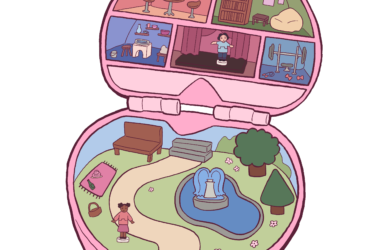Have you ever wanted to take a helicopter to work? Could you ditch hourly wages for self-motivated piecework? Despite the intensive labour, thousands of Canadian university students opt out of retail jobs and internships each summer to attempt to make a killing replanting Canada’s forests.
What is tree planting?
When a logging company wants to log an area, they lease the land from the government under the condition that it will be replanted according to specific species and density requirements. This is the basis for the silviculture, or tree planting, industry, composed of roughly 100 companies across Canada that specialize in completing the replant requirements.
Tree planting began as a prison activity in New Zealand in the early 20th century. The backbreaking labour was conceived as a form of productive punishment, but it fizzled out quickly. By the 1960s, in the age of peace, love, and free spirits, a few tree planting companies began to appear, offering to fulfill the demand of logging companies who needed their leased land replanted. Back then, the only people who would efficiently plant trees were hippies looking to make a quick buck in the summer and move on. Since then, the silviculture industry has been taken over by university students. Every May, students from schools across the country drop their books and pick up a shovel.
Each person is paid per tree, depending on a variety of factors including easiness of the land, species of tree, and travel time. This can vary from six cents per tree for trenches of loose soil in the Maritimes, to fifty cents or more per tree on the overgrown mountainsides in British Columbia.
Who goes tree planting?
The majority of tree planters are university students who need to make money quickly. The tree-planting season runs from May to July or August, which meshes perfectly with students’ semester schedule. There are also some non-students who choose to go tree planting, because it allows them to earn a significant amount of money in a few months.
Student or not, almost half of tree planters are women. This gender balance is unusual compared to other fields of manual labour, but tree planting is less about brute strength and more about speed, athleticism, and planning.
There is a general consensus that those who plant trees do it strictly for the money. Day after day of backbreaking work in the snow or hot sun takes a toll on one’s sanity. Some attempt tree planting as a character-building experience and quickly realize they have made a horrible mistake. But some say it’s a combination of the earning potential plus the lifestyle that leads them to return to tree planting year after year.
“Every year I swear I’m not coming back,” says Jonathan Gastaldi, who just finished his eighth season in the bush and third season crew bossing a group of tree planters. “But I always end up coming back. I miss all my friends too much.”
Good tree planters share a few important characteristics: they must be hardworking, intelligent, and excessively sarcastic. They complain a lot, but don’t take themselves too seriously (being labelled a complainer will result in a loss of respect). To gain respect, planters must be hard workers with a degree of modesty.
getting a job
Tree planting is not for everyone, but those who want to try it out can apply between January and March. However, the economic recession has resulted in less demand for timber, so logging companies are cutting and replanting less. Jobs, especially for rookies, have become much harder to come by. The application process is entirely online, and shortlisted candidates are interviewed by phone. Gastaldi, who has hired several rookies as a crew boss says, “When I speak to a potential rookie, I’m looking for specific answers. When I ask why they want to go planting, their answer should be ‘to make money,’ not ‘to get a tan and lose weight.’ Wanting a tan doesn’t show me they are a hard worker.”
Making money
The potential for making serious cash while tree planting is real, but there are many hidden costs. Transportation to rural areas can be hard to find and expensive. Tree planting companies provide water, food, and eating areas for $10-25 per day and planters are responsible for bringing their own shovel, bags, tent, and rain gear, which can cost around $1,000.
Since tree planters are paid per tree, there is a huge variance in how much each person makes. Rookies generally make much less than those with experience. Some rookies even finish the season owing their company money because they ask for cash advances and don’t plant enough to repay the few hundred dollars they received.
For those who work hard and move quickly, the payout can be huge. A good planter can make anywhere from $5,000-15,000 in one summer. Eric Rowles, a McGill student and seventh year planter, put his millionth tree in the ground last summer. He said his strategy is, “focus, perseverance, hard work, lots of water, good equipment, and a good crew boss. It’s also about making sacrifices and the ability to be alone all day. If you can’t be alone, you’re going to go crazy.”
The experience
As with money, individuals usually end the summer having obtained differing benefits from the experience. Some people become addicted to the lifestyle of working hard and partying harder, which keeps them coming back year after year.
“When I think about tree planting, I never think about the days when I plant 5,000 trees,” says Jordan Green, a fifth-year planter from Manitoba. “I think about the nights off. People who say they plant just for the money are lying.”
Planters typically try to forget the days they cried because it was snowing, or that time they were attacked by wasps. Instead, their fondest memories always come back to the most epic party night they can remember. Taking five shots of a “redheaded slut” shooter, then playing hide-and-go-seek with roman candles will stay with them forever, whereas the agony of the job somehow disappears from memory.
Some of the scarier moments in the wilderness even reinvent themselves in nostalgic ways. When a full-grown tree misses crushing someone by only a few feet, they retell the tale with a chuckle and describe how they could feel the earth shake as it crashed on the ground. Who could forget when all they had on was a rain jacket and spandex during a snowstorm? They barely broke even, but who cares now?
This doesn’t mean, however, that there aren’t bad days. The work is gruelling and the conditions are extreme. Falling in a river will make you cry. Getting eaten alive by blackflies/mosquitoes/no-see-ems/horseflies/deerflies will make you cry. Walking three miles with all your gear and horrible blisters on your heels will make you cry. Getting so sick you had to drink cough syrup out of the bottle in the middle of the forest will make you cry. Getting a sunburn that blistered for days will make you cry.
At the end of the day, what appeals to you more? Having a quiet, safe job and earning minimum wage, or taking a helicopter to work and pushing yourself harder than you ever have before with a huge payout?
As Green says, “It beats flipping burgers.”
Alice Walker will be returning to Manitoba in May to her third summer as a tree planter.
Tree planting lingo
Skreefing: the act of kicking pine needles and debris away from the spot you are about to plant a tree.
Cream: land that is very easy to plant in.
A piece: an area in which you are responsible for planting.
Flag line: pieces of colourful tape tied onto branches and logs to mark where your piece starts.
Shnarb: overgrowth, branches and debris that make it difficult to plant
Hi-baller: someone who plants considerably more than the average planter
Websites
replant.ca
tree-planter
.com
twisted-tree-productions.ca







